Why Mount Mao Should Be Your Next Travel Destination in China
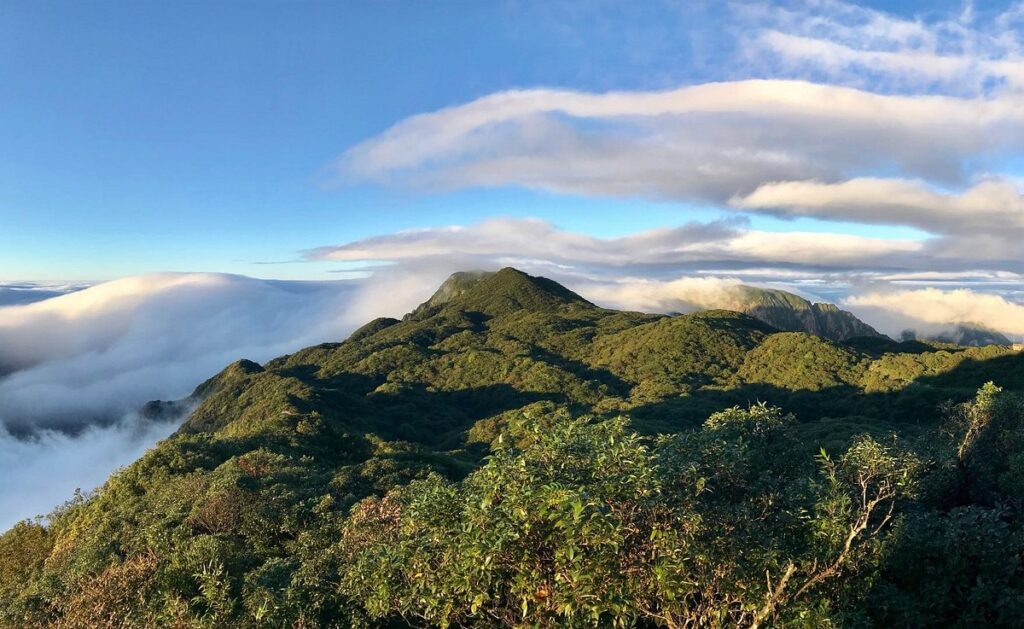
An Essential Guide to Visiting Mount Mao
Nestled amidst the verdant landscapes of Hunan Province, Mount Mao (茅山) stands as a testament to China’s rich revolutionary history and natural beauty. Renowned not only for its breathtaking vistas, this sacred mountain is also deeply intertwined with the legacy of Chairman Mao Zedong, making it a pilgrimage site for those wishing to delve into the spirit of the Chinese revolution. Here, visitors can explore serene trails that wind through lush forests, uncover historical relics, and revel in panoramic views that inspire reflection and awe.
This essential guide will lead you through Mount Mao’s most captivating features, including the famous Mao Zedong’s Former Residence in nearby Shaoshan, the tranquil Mao Zedong Memorial Hall, and the stunning natural landscapes that envelop the area. We’ll navigate the best travel tips, from transportation options to accommodation recommendations, ensuring your visit is as smooth as it is enriching. Additionally, we’ll highlight local culinary delights that capture the essence of Hunan’s flavors, along with practical advice on how to immerse yourself in the cultural significance of this unique destination.
Whether you’re a history enthusiast, a nature lover, or simply seeking an adventurous escape, Mount Mao promises an unforgettable journey where the echoes of the past meet the beauty of the present. Prepare to embark on a transformative experience that resonates long after you leave.
In This Guide
- An Essential Guide to Visiting Mount Mao
- The Rich History and Legends of Mount Mao
- Main Highlights: What You Absolutely Can’t Miss
- Planning Your Visit: A Practical Guide
- Tickets: Prices, Booking, and Tips
- How to Get There: A Complete Transportation Guide
- Local Cuisine and Accommodation Nearby
- Frequently Asked Questions
- Final Thoughts on Your Trip
The Rich History and Legends of Mount Mao
Mount Mao, or 茅山, is a name steeped in history and legend, offering a captivating glimpse into China’s rich cultural tapestry. Nestled in Jiangsu Province, this sacred mountain has served as a vital site for Daoism and has been a witness to numerous historical events and mythical tales.
The Historical Significance of Mount Mao
Mount Mao has long been revered as a center of Daoist culture, with its origins dating back to the Han Dynasty (206 BCE – 220 CE). The mountain was named after the esteemed Daoist immortal, Mao Shun, who was said to have practiced alchemy and meditation in its serene embrace. Over centuries, it has attracted scholars, poets, and religious practitioners, becoming a hub for Daoist teachings and spiritual practices.
During the Tang (618–907) and Song (960–1279) dynasties, Mount Mao emerged as a prominent pilgrimage site. The construction of temples, such as the famous Lingyan Temple, transformed the landscape into a spiritual haven. These structures not only served religious purposes but also became centers of learning where scholars gathered to exchange ideas and explore the philosophies of Daoism.
The Revolutionary Era
As China underwent significant political and social changes in the 20th century, Mount Mao remained a silent observer of history. In the midst of turmoil during the Chinese Civil War, it became a strategic location for revolutionary activities. The mountain’s rugged terrain provided a natural fortress for revolutionaries, who utilized its secluded environment to plan their strategies.
The legacy of Mount Mao continued to evolve post-revolution, as it became a symbol of resilience and cultural identity. The construction of monuments and parks commemorating the revolutionary spirit of the Chinese people further solidified its status as a historical landmark.
Legends and Myths
The legends surrounding Mount Mao are as enchanting as its landscapes. One of the most famous tales is that of the “Eight Immortals of Mount Mao,” who are said to have descended from the heavens to bestow blessings upon the mountain and its visitors. Each of the immortals represents a different virtue and is associated with unique powers, attracting those seeking wisdom, wealth, or health.
Another captivating legend tells of a hidden treasure buried within the mountain, protected by a fierce dragon spirit. According to local lore, only those pure of heart and intent can uncover this treasure, which is believed to grant immense knowledge and insight. Many have attempted to find this treasure, but the mountain’s mystical aura continues to guard its secrets.
Cultural Influence
Mount Mao’s legends and historical significance have permeated Chinese culture, inspiring countless works of literature, art, and poetry. It serves as a backdrop for classical Chinese literature, where poets have penned verses celebrating its beauty and spiritual energy. The mountain has also influenced contemporary artists, who draw inspiration from its serene landscapes and rich heritage.
Conclusion
A journey to Mount Mao is not just a trek through nature; it is a passage through time. Visitors are invited to explore its ancient temples, walk along its mystical trails, and immerse themselves in the legends that echo through the ages. Whether you seek spiritual enlightenment, historical insight, or simply a breathtaking escape into nature, Mount Mao promises an unforgettable experience that resonates with the heart and soul of China’s enduring legacy.

Mount Mao.
Main Highlights: What You Absolutely Can’t Miss
Mao Zedong’s Former Residence: A Journey into History
Step into the very rooms where Chairman Mao Zedong spent his formative years. This well-preserved residence offers visitors a unique insight into Mao’s early life, surrounded by the serene beauty of green mountains and flowing waters. Explore the intimate details of his childhood and teenage years, as well as gaze upon statues and monuments that honor his legacy. Tip: Consider booking a guided tour to enrich your experience with deeper historical context.
Chairman Mao Memorial Hall: A Tribute to a Great Leader
The Chairman Mao Memorial Hall is a must-visit for those who wish to delve deeper into the revolutionary spirit that shaped modern China. This hall houses extensive exhibits of historical artifacts and materials that chronicle Mao’s life and contributions to the nation. Make sure to take a moment to write your reflections on the message wall, which connects you with other visitors who share in this historical journey. Tip: Allocate at least an hour for your visit to fully appreciate the exhibits.
Dishuidong Revolutionary Site: Echoes of the Past
Venture to the Dishuidong Revolutionary Site, a significant historical landmark where the spark of revolution ignited. This site allows visitors to witness the very location where Mao and his contemporaries strategized for change. The caves here are enchanting, with shifting light and shadow creating a mystical ambience. Tip: Bring a good camera, as the interplay of light within the caves makes for stunning photography opportunities.
Shaoshan Chong: Nature’s Serenity
After immersing yourself in history, take a breather at Shaoshan Chong, a picturesque area dotted with lush forests and clear waters. This is the perfect spot to relax your mind and recharge your spirit. Pack a picnic and enjoy the tranquil surroundings, which are ideal for reflection or simply basking in nature’s beauty. Tip: Arrive early in the day for the best light and fewer crowds.
Chairman Mao Statue Square: A Majestic Icon
No trip to Shaoshan is complete without a visit to the towering bronze statue of Chairman Mao. Standing proudly, this statue serves as a solemn reminder of his influence and legacy. The square is an excellent location for photographs that capture the essence of your visit. Tip: Visit at sunset for breathtaking lighting that enhances your photos.
Panlong Grand View Garden: A Natural Wonderland
For those seeking whimsical beauty, the Panlong Grand View Garden is a must-see. Spanning 3,000 acres, this ecological paradise features stunning floral displays and serene pathways. Each season brings its own charm, making it a perfect stop for a leisurely stroll or a romantic afternoon. Tip: Don’t forget your camera—every corner offers Instagram-worthy scenes!
Shaoshan Culinary Delights: A Taste of Local Flavor
While exploring the historical and natural wonders, indulge your taste buds by sampling local specialties. From the smoky flavors of Tujia smoked bacon to the refreshing wild vegetable soup, the cuisine reflects the rich culture of the region. Tip: Try visiting local eateries for an authentic dining experience, and don’t hesitate to ask for recommendations on the best dishes to try!
Embarking on a journey to Mount Mao is about more than just sightseeing; it’s about connecting with the very essence of China’s revolutionary spirit and immersing yourself in the rich tapestry of history and culture. Enjoy your adventure!
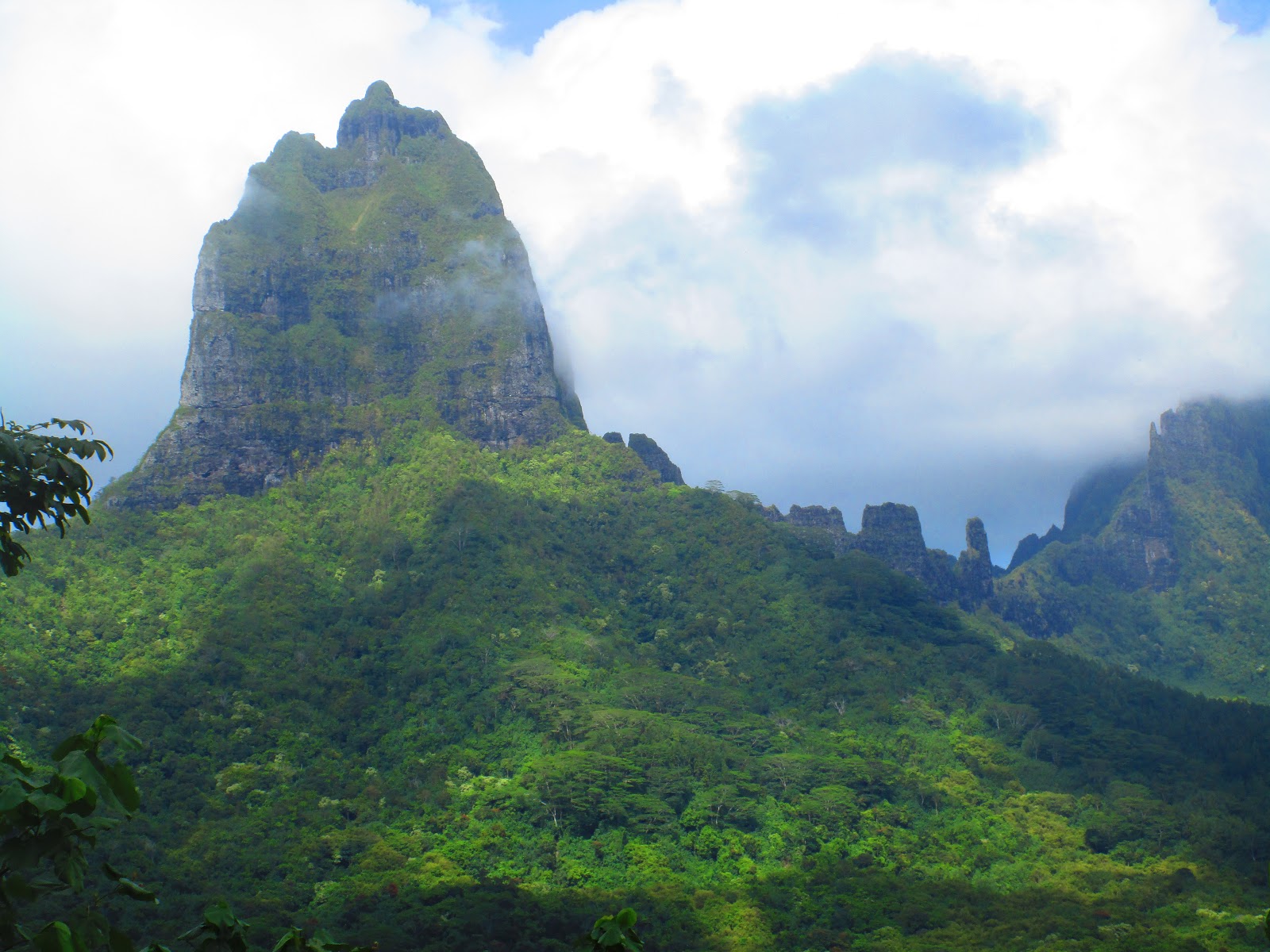
Mount Mao.
Planning Your Visit: A Practical Guide
Best Time to Visit
The ideal time to visit Mount Mao (茅山) is during the spring (March to May) and autumn (September to November) months. During these seasons, the weather is mild and comfortable for outdoor exploration, with blooming flowers in the spring and vibrant foliage in the autumn. Summer can be hot and humid, while winter temperatures may drop, making hiking less pleasant. Aim for weekdays to avoid larger crowds, especially during public holidays.
Recommended Itinerary
Day 1: Arrival and Exploration
– Morning: Arrive in Shaoshan City, the gateway to Mount Mao. Check into your accommodation and freshen up.
– Noon: Enjoy a local meal featuring Shaoshan specialties like Tujia smoked bacon or wild vegetable soup at a nearby restaurant.
– Afternoon: Visit Mao Zedong’s Former Residence to soak in the revolutionary history and learn about the leader’s early life.
– Evening: Stroll through Chairman Mao Statue Square for stunning evening views and photo opportunities.
Day 2: Mount Mao Adventures
– Morning: Start your day with a hearty breakfast, then head to Mount Mao. Opt for a guided tour to enhance your experience.
– Midday: Explore the mountain trails, taking in the breathtaking natural scenery. Don’t forget to pack a picnic to enjoy amidst nature.
– Afternoon: Visit the Dishuidong Revolutionary Site, where you can reflect on the historical significance of the area.
– Evening: Return to your accommodation and unwind after a day of exploration.
Photography Tips
- Golden Hour: Capture Mount Mao’s beauty during the golden hour—early morning or late afternoon—when the light is soft and warm.
- Wide-Angle Lens: Bring a wide-angle lens to capture the sweeping landscapes and majestic views of the mountains.
- Candid Moments: Don’t just focus on the scenery; capture candid moments of fellow travelers engaging with the environment or reflecting on the history.
- Local Flora and Fauna: Pay attention to the unique local plants and any wildlife. These small details can add depth to your travel photography.
- Respect the Space: While taking photos, be mindful of the surroundings and respect the cultural significance of the areas you are visiting.
What to Wear
- Comfortable Footwear: Sturdy hiking shoes are essential for navigating the mountain trails comfortably and safely.
- Layered Clothing: Dress in layers to adapt to changing temperatures throughout the day. A light jacket or fleece can be useful in cooler areas.
- Sun Protection: Don’t forget a hat, sunglasses, and sunscreen, especially for outdoor activities at higher elevations.
- Backpack: A small backpack will help carry essentials like water, snacks, and a camera while keeping your hands free for exploring.
Insider Tips
- Engage with Local Guides: Hiring a local guide can enrich your experience with stories and insights about the revolutionary history of Mount Mao and its significance.
- Try Local Delicacies: Savor local dishes at eateries known for traditional Hunan cuisine, such as spicy dishes and smoked meats. Ask locals for their recommendations!
- Respect Cultural Practices: As you visit historical sites, remember to be respectful by following local customs, maintaining silence in memorial areas, and avoiding loud conversations.
- Stay Hydrated: Bring plenty of water, especially if you’re hiking. Staying hydrated is vital in warmer months and at higher altitudes.
- Explore Beyond the Main Attractions: While the main historical sites are a must, take time to wander off the beaten path and discover hidden gems and serene spots along the trails.
By following this practical guide, you’ll be well-prepared to explore the rich history and stunning natural beauty of Mount Mao, ensuring a memorable visit!
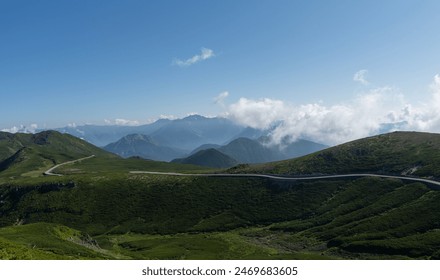
Mount Mao.
Tickets: Prices, Booking, and Tips
Visiting Mount Mao (茅山) offers a unique glimpse into China’s revolutionary history, making it a must-see destination for both history enthusiasts and casual travelers alike. Below, you’ll find essential ticket information and tips for booking your visit to this historic site.
Ticket Information
| Ticket Type | Price (CNY) | Includes |
|---|---|---|
| Adult Admission | Free | Access to all public areas of Mount Mao |
| Guided Tour | 50 | Expert-led tour, historical insights, and access to exclusive areas |
| Audio Guide Rental | 20 | Portable audio device with information on key sites around Mount Mao |
Booking Your Tickets
-
Online Booking: It is highly recommended to book your guided tour and audio guides in advance through various travel platforms or the official Mount Mao website. This ensures you secure your spot, especially during peak travel seasons.
-
Walk-in Tickets: While entry to the public areas of Mount Mao is free, guided tours and audio guides can be arranged on-site. However, availability may be limited, particularly on weekends and holidays.
-
Group Discounts: If you’re traveling with a group, inquire about special rates for guided tours. This can enhance your experience while also providing cost savings.
Tips for Your Visit
-
Advance Reservations: Booking your guided tour or audio guide ahead of time is crucial, as this will not only save you time but also enhance your understanding of the historical significance of Mount Mao.
-
Plan Your Visit: Allocate 1-2 hours for your visit to fully appreciate the surroundings and soak in the rich history.
-
Respect the Site: As a location of historical importance, maintaining a respectful demeanor is essential. Enjoy the tranquility and take your time to reflect on the events that shaped this region.
By following these ticketing tips and recommendations, you can ensure a smooth and enriching visit to Mount Mao, where history and natural beauty converge. Enjoy your journey!
How to Get There: A Complete Transportation Guide
Accessing the Majestic Mount Mao
Mount Mao (茅山), known for its rich history and stunning landscapes, is a must-visit destination for travelers looking to delve into China’s revolutionary past while enjoying the natural beauty of Hunan Province. Here’s a complete guide on how to reach this iconic landmark.
From the Nearest Major City: Changsha
By Train:
1. High-Speed Rail to Shaoshan Station:
– Duration: Approximately 1 hour
– Cost: Around ¥70-¥100 ($10-$15) depending on the train class.
– Details: High-speed trains frequently depart from Changsha South Railway Station to Shaoshan Station. Once you arrive, you can take a tourist bus or a taxi to Mount Mao.
By Bus:
1. Direct Bus:
– Duration: About 2 hours
– Cost: Approximately ¥40-¥60 ($6-$9).
– Details: Buses to Shaoshan leave from Changsha’s West Bus Station. Buses run every 30 minutes, making this a convenient option for travelers.
By Car:
1. Self-Drive:
– Duration: Around 2 hours
– Route: Take the G4 Jinggang’ao Expressway directly to Shaoshan.
– Details: Renting a car offers flexibility to explore the scenic routes and enjoy the beautiful landscapes along the way. Ensure you have a GPS or a navigation app for directions.
From Nearby Cities: Xiangtan
By Train:
1. Regular Train to Shaoshan:
– Duration: Approximately 30 minutes
– Cost: About ¥20-¥30 ($3-$5).
– Details: Trains from Xiangtan Railway Station to Shaoshan Station run regularly throughout the day.
By Bus:
1. Local Bus Services:
– Duration: Roughly 1 hour
– Cost: Around ¥15-¥20 ($2-$3).
– Details: Local buses depart from Xiangtan Bus Station, providing a budget-friendly option to reach Shaoshan.
By Car:
1. Driving:
– Duration: About 1 hour via the S306 road.
– Details: Driving from Xiangtan allows you to enjoy the picturesque countryside of Hunan.
Getting Around the Scenic Area
Once you arrive at Mount Mao, navigating the scenic area is straightforward:
Tourist Buses:
– Details: Dedicated tourist buses frequently operate between major attractions within the Mount Mao area, including Mao Zedong’s Former Residence and other historical sites. Tickets can be purchased near the entrance of each site.
Walking:
– Details: The area is pedestrian-friendly, and walking is one of the best ways to soak in the natural beauty and historical significance of Mount Mao. Wear comfortable shoes, as some trails can be steep.
Taxis:
– Details: Taxis are readily available for hire in Shaoshan. Ensure to negotiate the fare beforehand or use a ride-hailing app if available.
Bicycle Rentals:
– Details: For a more adventurous and eco-friendly option, consider renting a bicycle to explore the scenic spots at your own pace.
Final Tips for Travelers
- Language: While major transportation hubs may have English signage, it’s advisable to learn a few basic Mandarin phrases or download a translation app.
- Plan Ahead: During peak seasons, transportation options may fill up quickly, so it’s wise to book tickets in advance, especially for trains.
- Respect Local Customs: As you explore this historically significant area, remember to respect local customs and maintain a quiet demeanor, particularly at sites of reverence.
With this comprehensive transportation guide, you’re well-equipped to embark on your journey to Mount Mao, where history and nature intertwine beautifully. Enjoy your trip!
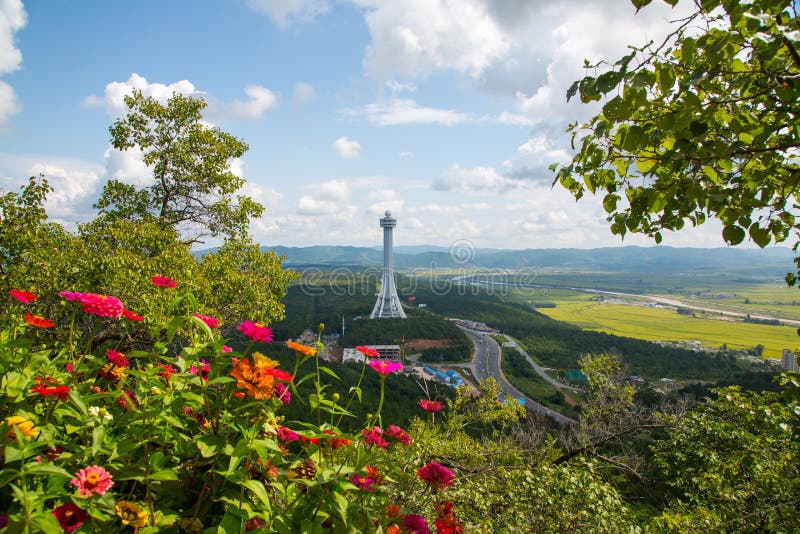
Mount Mao.
Local Cuisine and Accommodation Nearby
Nestled in the scenic landscapes surrounding Mount Mao, the region offers a delightful array of local cuisine and a variety of accommodation options that cater to all travel preferences. Whether you’re a history enthusiast or a nature lover, the flavors and comforts of this area will enhance your experience.
Culinary Delights
-
Shaoshan Tujia Smoked Bacon
This local specialty boasts a rich, smoky flavor that perfectly complements steamed rice. The tender meat is typically marinated in spices, then smoked over fragrant wood, resulting in an irresistible dish that pays homage to the region’s culinary traditions. -
Red Revolution Cuisine
Emblematic of the local culture, these dishes are inspired by revolutionary themes and often incorporate seasonal vegetables and meats. Expect to find vibrant presentations and unique flavor combinations that reflect the spirit of Shaoshan’s history. -
Wild Vegetable Soup
Freshly foraged from the surrounding mountains, this light and nutritious soup is made with an assortment of wild greens. It’s a healthy choice that replenishes your energy after a day of exploring the beautiful landscapes of Mount Mao. -
Xiangxiang Baked Cake
A century-old delicacy, these sweet, fire-roasted cakes have a melt-in-your-mouth texture and are perfect as a snack or dessert. They offer a delightful taste of Xiangtan’s rich culinary heritage.
Accommodation Options
-
Luxury Stay
Xiangtan Huayin International Hotel
Located adjacent to the picturesque Xiang River, this hotel offers stunning views and top-notch amenities, ensuring a comfortable and elegant stay. Guests can enjoy a tranquil atmosphere while being conveniently close to the historical sites. -
Boutique Experience
Shaoshan Hotel
This charming hotel features beautifully decorated rooms and a cozy ambiance. Just a stone’s throw from key attractions like Mao Zedong’s Former Residence, it provides an intimate experience steeped in local culture. -
Budget-Friendly Choice
Hostel in Shaoshan
Perfect for backpackers or budget-conscious travelers, this hostel offers clean, shared accommodations with a friendly vibe. It’s a great place to meet other travelers and share stories about your adventures in the region. -
Specialty Homestays
For those looking to dive deeper into local life, consider a homestay in Shaoshan. These accommodations provide an authentic rural atmosphere, often including home-cooked meals made from locally sourced ingredients, making it a memorable experience.
With these culinary treats and accommodation choices, your visit to Mount Mao will be filled with flavors of the region and comforts that enhance your travel experience. Enjoy your journey through this culturally rich and historically significant area!
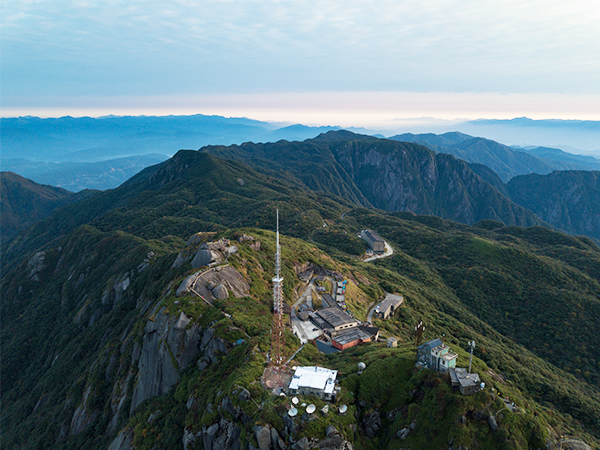
Mount Mao.
Frequently Asked Questions
Frequently Asked Questions about Mount Mao (茅山)
- Is Mount Mao suitable for children and the elderly?
-
Yes, Mount Mao is generally suitable for families with children and elderly visitors. The trails vary in difficulty, with options for gentle walks and more challenging hikes. However, it’s always advisable to check the specific trail conditions in advance and ensure that everyone is physically capable of the planned activities.
-
Are there English signs and guides available?
-
While many signs at Mount Mao and the surrounding attractions are in Chinese, there are some English translations, especially at major sites like Mao Zedong’s Former Residence and memorials. Additionally, guided tours often provide English-speaking guides, which can enhance your understanding of the area’s historical significance.
-
How much time should I plan for my visit?
-
Plan to spend approximately 1 to 2 hours at Mao Zedong’s Former Residence to fully appreciate the exhibits and the historical context. If you intend to explore additional attractions such as the Chairman Mao Memorial Hall or the surrounding natural scenery, consider allocating half a day for a more relaxed experience.
-
What’s the best way to get to Mount Mao?
-
Mount Mao is conveniently accessible by various means. You can self-drive from Changsha, which takes about 2 hours via the Jinggang’ao Expressway. Alternatively, you can take a high-speed train to Shaoshan Station and then transfer to a tourist bus directly to the scenic area.
-
Are there facilities like restrooms and food options on-site?
-
Yes, there are restroom facilities available at the main attractions. However, food options may be limited within the immediate vicinity of Mount Mao. It’s recommended to plan ahead and either pack snacks or enjoy meals at local restaurants in Shaoshan after your visit.
-
What should I wear and bring for my visit?
-
Wear comfortable footwear suitable for walking or hiking, as some trails may be uneven. Dress in layers to accommodate changing weather conditions. A water bottle and sun protection, such as sunscreen and a hat, are also advisable, especially during warmer months.
-
Is there an entrance fee for Mount Mao’s attractions?
-
Admission to Mao Zedong’s Former Residence is free, making it an accessible stop for visitors. However, some specific exhibitions or guided tours may have associated costs, so it’s best to check in advance.
-
What cultural etiquette should I be aware of while visiting?
- When visiting historical sites, especially those with significant cultural and revolutionary importance, it’s essential to be respectful. Maintain a quiet demeanor, avoid littering, and be mindful of photography restrictions in certain areas. Engaging with local customs and traditions is encouraged to enhance your experience.
Final Thoughts on Your Trip
As your journey through Mount Mao comes to a close, take a moment to reflect on the profound blend of history, culture, and natural beauty that defines this remarkable destination. From the serene trails leading to Mao Zedong’s former residence to the inspirational stories that echo through the lush landscapes, every corner of Mount Mao invites you to engage with the spirit of resilience and revolutionary fervor that shaped modern China.
Whether you were captivated by the peaceful surroundings of Shaoshan or inspired by the tales of a great leader, your experience here transcends mere sightseeing. It becomes a celebration of heritage, a reminder of the values that forged a nation, and a call to carry that spirit forward in your own life.
As you depart, let the essence of Mount Mao linger in your heart. Embrace the lessons learned and the history witnessed, and may the echoes of this journey inspire you to pursue your own path with courage and determination. Every step taken here is not just a walk through history; it’s a step towards understanding and appreciating the rich tapestry of human experience. Safe travels, and may your adventures continue to be filled with inspiration and discovery.